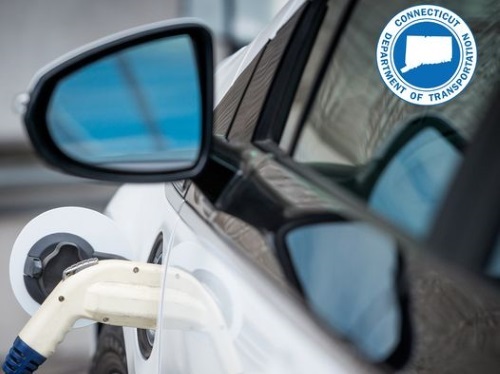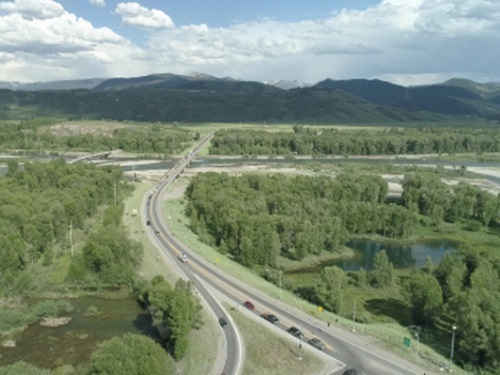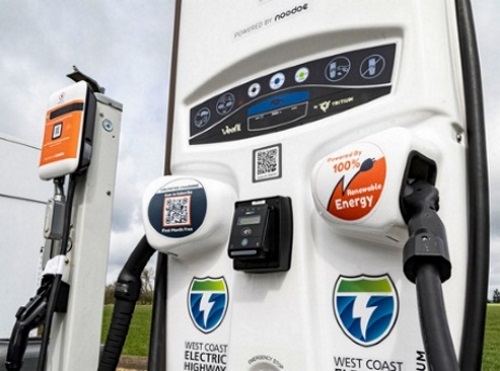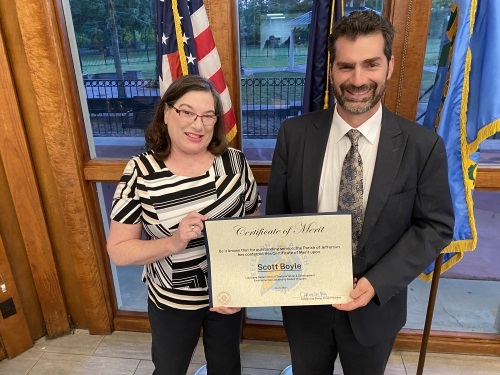FEDERAL ACTION
AASHTO, NASAO Applaud Senate Committee For Approving Legislation To Support Advanced Air Mobility Planning – AASHTO
Greening The Federal Government’s Massive Procurement System – Forbes
Biden-Harris Administration Holds Justice40 Week of Action to Highlight Historic Investments in Overburdened and Underserved Communities – White House (Factsheet)
USDOT Announces Initial $13 Million Funding Opportunity from Infrastructure Law for Transit Planning That Addresses Climate Change and Equity in Communities Nationwide – FTA (Media release)
USDOT Begins Accepting Applications for Program Designed to Improve Pipeline Safety, Reduce Gas Distribution Leaks in Communities Across US – USDOT (Media release)
COVID-19
Three ferry routes back at pre-pandemic service levels for start of busy season – Washington State DOT (Media release)
INFRASTRUCTURE RESILIENCE AND SUSTAINABILITY
Texas State, San Marcos collaborate to provide eco-friendly transportation – University Star
With new agreement, Port of Alaska and Sandia lab to evaluate renewable energy for microgrid – Alaska Beacon
Electric vehicles tease a new energy source: Gravity – NBC News
LED Streetlight Replacement Projects Show Huge Savings – Government Technology
NCDOT Has Developed Early Flood-Warning System for Roads – North Carolina DOT (Media release)
AIR QUALITY
Port of Virginia Plans to Run on 100-Percent Clean Electricity by 2024 – Maritime Executive
ENVIRONMENTAL JUSTICE
Transportation gaps may persist for rural older adults despite infrastructure dollars – NBC News
Equitable transportation guidelines adopted by Richmond City Council – Virginia Public Media
App to help blind people navigate public transit to debut in Washington – Reuters
Administrator Michael Regan x Broccoli City: An Environmental Justice Conversation – EPA (link video)
Pa.’s environmental justice policy gets revamped – and scrutinized – Pittsburgh Post-Gazette
It’s time for true equity in Oregon transportation funding – The Bulletin (Commentary)
NATURAL RESOURCES
California Water Regulators Still Haven’t Considered the Growing Body of Research on the Risks of Oil Field Wastewater – Inside Climate News
A vicious cycle of oxygen loss threatens water quality in lakes – Virginia Tech
Bird houses erected near Litchfield as part of “Give Birds the Right of Way” program – Illinois DOT (Media release)
CULTURAL RESOURCES
Artist Makes Own Traffic-Calming Measures – New Haven Independent
HEALTH AND HUMAN ENVIRONMENT/ACTIVE TRANSPORTATION
Navajo Nation Working to Expand Bicycling through New Trails, Kids’ Programs, and Racing – Cycling Utah
Nashville’s debris-filled bike lanes get their own sweeper – WPLN Radio
NJDOT Offers Free Bicycle and Pedestrian Planning Assistance for Towns and Counties – Bicycle Coalition of Greater Philadelphia
Replace short car trips with e-bikes: report – ITS International
The Next Growth Spurt for Scooters Is in Partnerships – Government Technology
TRB RESOURCES/ANNOUNCEMENTS
President Biden and U.S. Department of Transportation Announce $450 Million to Fund up to 35 University Transportation Centers – USDOT (Media release)
FEDERAL REGISTER NOTICES
U.S. DOT FY22 Safe Streets and Roads for All Funding – Office of the Secretary, USDOT (Notice of Funding Opportunity)
FY 2022 Competitive Funding Opportunity: Pilot Program for Transit- Oriented Development Planning – FTA (Notice of Funding Opportunity)
Air Plan Approval; Missouri; Restriction of Emissions Credit for Reduced Pollutant Concentrations From the Use of Dispersion Techniques – EPA (Final rule)
Air Plan Approval; North Carolina; Repeal of Delegation Authority – EPA (Final rule)
Delegation of New Source Performance Standards and National Emission Standards for Hazardous Air Pollutants for the States of Arizona and California – EPA (Withdrawal of direct final rule)
Comprehensive Environmental Response, Compensation, and Liability Act (CERCLA); Notice of Grant Funding Guidance for FY 2022 State and Tribal Response Program With Funding Provided by the Bipartisan Infrastructure Investment and Jobs Act – EPA (Notice)
Release of the Policy Assessment for the Reconsideration of the National Ambient Air Quality Standards for Particulate Matter – EPA (Notice of availability; policy assessment)
Proposed Determination To Prohibit and Restrict the Use of Certain Waters Within Defined Areas as Disposal Sites; Pebble Deposit Area, Southwest Alaska – EPA (Notice of availability and public
hearing)
Notice of Application for Extension of Public Land Order No. 7555 and Opportunity for Public Meeting; Alaska – Bureau of Land Management, Interior (Notice)
Final Guidance for Identification of Nonindustrial Private Forest Land – Natural Resources Conservation Service (Notice)
Gulf South Pipeline Company, LLC; Notice of Scoping Period Requesting Comments on Environmental Issues for the Proposed Index 130 MS River Replacement Project – Federal Energy Regulatory Commission (Notice)
Notice of Availability of Record of Decision for the Final Environmental Impact Statement for Testing and Training Activities in the Patuxent River Complex – Department of the Navy (Notice)
Nominations for U.S. Commissioners to Regional Fisheries Management Organizations – National Marine Fisheries Service (Notice; call for nominations)
Notice of Solicitation of Applications for Stakeholder Representative Members of the Missouri River Recovery Implementation Committee – Army Corps of Engineers (Notice)







